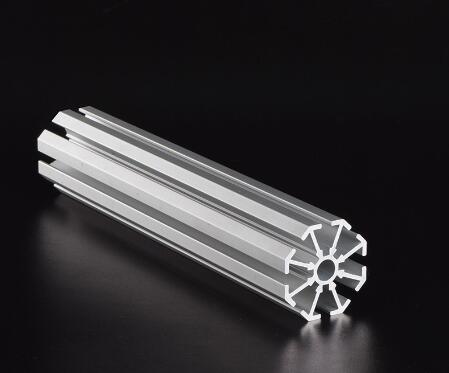Conveyor systems are vital components in manufacturing and industrial settings, helping to transport materials efficiently and reliably. The aluminium profile used in conveyor construction is critical to its performance, offering the necessary strength, flexibility, and durability. Choosing the right aluminium profile for your conveyor system can significantly impact its longevity and effectiveness. This article will guide you through the key factors to consider when selecting conveyor aluminium profiles.

The first factor to consider when choosing an aluminium profile for your conveyor system is the load capacity. Different conveyor systems handle varying levels of weight, so it's essential to select an aluminium profile that can support the specific load demands of your application.
For lighter loads, you may opt for a more lightweight and flexible aluminium profile. However, for heavier loads, such as those found in manufacturing or material-handling industries, you will need a profile with greater structural integrity. Consider the load-bearing capacity of the profile to ensure that it can handle the weight without bending or warping.
The type of conveyor system you’re using will influence the aluminium profile you need. For example, belt conveyors, roller conveyors, and chain conveyors all require different profiles due to their unique designs and functions.
- Belt conveyors: These systems typically use flat aluminium profiles that offer a smooth surface for the belt to slide across. Profiles must be strong enough to withstand the tension of the belt without distorting.
- Roller conveyors: These require profiles with slots or mounting points to secure the rollers. The profile must also be strong enough to support the weight of the material being conveyed on the rollers.
- Chain conveyors: Chain-driven conveyors need aluminium profiles with mounting points for the chain and any drive mechanisms. The profile must provide sufficient support for both the chains and the materials being transported.
By considering the type of conveyor you are building or maintaining, you can select a profile that is suited to the specific mechanical requirements of your system.
Aluminium profiles for conveyors must not only support the load but also be durable enough to withstand harsh operating environments. Factors such as exposure to chemicals, temperature fluctuations, or mechanical stress can all affect the profile’s longevity.
When selecting an aluminium profile, look for options made from high-quality, corrosion-resistant alloys. Aluminium is naturally corrosion-resistant, but certain environments, such as those involving high humidity or corrosive chemicals, may require profiles with additional surface treatments like anodizing. Anodized aluminium provides extra protection against wear and tear, making it ideal for conveyor systems operating in challenging conditions.
One of the key advantages of aluminium profiles is their modularity and flexibility. These profiles often come with standardised slots or mounting points, allowing for easy attachment of accessories and components. When selecting an aluminium profile, consider how easily it can be modified or expanded if your conveyor system needs to be adjusted or upgraded in the future.
Opt for profiles that can accommodate a variety of components, such as guard rails, sensors, or guides. This flexibility will allow you to customise the conveyor system based on your specific operational needs and will make future modifications much simpler. Modular aluminium profiles can also reduce the need for welding or custom fabrication, saving both time and cost.
Conveyor systems often require various accessories, such as motor mounts, guides, supports, and brackets, all of which need to be securely attached to the aluminium profile. Before choosing a profile, ensure it is compatible with the necessary accessories for your conveyor.
Many aluminium profiles feature standardised slots or T-slots, allowing for easy attachment of components using bolts or connectors. When selecting a profile, check that the slot size and spacing are suitable for the accessories you plan to use. Ensuring compatibility from the outset will save you time and effort during assembly and maintenance.
Choosing the right aluminium profile for your conveyor system is crucial for ensuring its performance, reliability, and longevity. By considering factors such as load requirements, conveyor type, strength, flexibility, and accessory compatibility, you can select the most suitable profile for your application.
If you need further assistance in choosing the right aluminium profile or are looking for a reliable supplier of conveyor components, feel free to contact us for expert advice.
Sign up to receive our newsletter and exclusive discounts and offters.